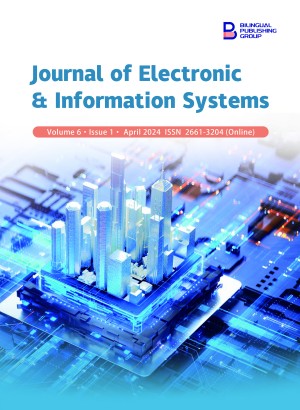Information Systems Facilitate the UK Ambulance Service Transition towards an Omni-Channel Service
DOI:
https://doi.org/10.30564/jeis.v6i2.6454Abstract
This paper represents a description of those ‘hidden’ policies supported by information systems that currently influence the direction of change within the UK ambulance service. When an ambulance service displays poor response times it may have reached a situation where demand exceeds supply regularly, then using ‘critical thinking’ the management should reconstruct their approach and focus exclusively on patient needs and the sources of appropriate help. The UK ambulance service has developed three strategic approaches; firstly, a single-channel strategy employing ambulance service staff only (‘hear and treat, or ‘see and treat’); secondly, a multi-channel strategy involving other NHS services (from call to on–scene then accident and emergency or direct to a hospital ward); and thirdly, a new omni-channel strategy where the patient is directed on a pathway from the ambulance service to a combination of other NHS or voluntary services. The key element in developing an omni-channel strategy is a secondary triage system, supported by a new database, which ensures patients are directed to a specialist service that could provide them with the most immediate help to meet their needs. Some of these services to patients (for example, the Falls team) are provided by the ambulance service directly. Patients are directed to alternative services, identified in the database, this system allows the ambulance service to bypass accident and emergency and monitor the patient’s pathway from the initial call to the outcome. Initial small projects indicate that the omni-channel system reduces duplication of effort, improves system productivity, reduces cost and shortens patients call to outcome time.
Keywords:
Ambulance Service; Information systems; Omni-Channel; Critical Thinking; RestructuringReferences
[1] House of Lords Public Services Committee [Internet]. Emergency Healthcare: A National Emergency. Available from: https://publications.parliament.uk/pa/ld5803/ldselect/pubserv/130/13004.htm
[2] BBC News Health [Internet]. Ambulance Service Being Misused, Paramedics Say. Available from: https://www.bbc.com/news/health-64136691
[3] Audit Commission, 1998. A Life in the Fast Lane. HMSO, London.
[4] Hussain Z., 2023. What is Happening with NHS Ambulance Delays. BMJ 380, 142. DOI: https://doi.org/10.1136/bmj.p142
[5] Mirror [Internet]. NHS Horror as patients forced to get the bus or drive instead of waiting for an ambulance [cited May 1, 2024]. Available from: https://www.mirror.co.uk/news/health/ambulance-service-on-its-knees-29669112?utm_source=linkCopy&utm_medium=social&utm_campaign=sharebar
[6] Thomas, R., Devlin, K., 2023. Revealed ambulance delays cause severe harm. Independent. 2023 January 20th .
[7] NHS England [Internet]. Operational productivity and performance in english nhs ambulance trusts: unwarranted variations. [cited May 1, 2024]. Available from: https://www.england.nhs.uk/wp-content/uploads/2019/09/Operational_productivity_and_performance_NHS_Ambulance_Trusts_final.pdf
[8] Lakhani M, Fernandes A and Archard D. 2007. Urgent care: a position statement from the royal college of general practitioners. London: Royal College of General Practitioners.
[9] Chamberlain DA, Brown PM and Briggs RS (1976). The brighton resuscitation ambulances: a continuing experiment in pre-hospital care by ambulance staff. BMJ 2, 1161–1165. DOI: https://doi.org/10.1136/bmj.2.6045.1161
[10] McCann L., 2022. The Paramedic at Work. Oxford University Press, Oxford.
[11] Brewis J., Godfrey R., 2019. From extreme to mundane? The changing face of paramedicine in the UK ambulance service. Critical Perspectives on the Management and Organisation of Emergency Services’ Routledge. 179–199. DOI: https://doi.org/10.4324/9781315104447
[12] Granter E., Wankhade P., McCann L., et al., 2019. Multiple dimensions of work intensity; ambulance work as edgework. Employment and Society. 33(2), 280–297. DOI: https://doi.org/10.1177/0950017018759207
[13] Heath G., Radcliffe J., Wankhade P., 2018. Performance management in the public sector: the case of the english ambulance service. The Routledge Companion to Performance Management and Control. 417–438.
[14] Wankhade P., Heath G., Radcliffe J., 2018. Cultural change and perpetuation in organisations; evidence from the english ambulance service. Public Management Review. 2(6), 923–948. DOI: https://doi.org/10.1080/14719037.2017.1382278
[15] Wankhade P., Stokes P., Tarba S., Rodgers P., 2020. Work intensification and ambidexterity – notions of extreme and‘everyday’in emergency contexts: surfacing dynamics in the ambulance service. Public Management Review. 22(1), 48–74.
[16] Paul R., Elder E., 2006. Critical Thinking Concepts and Tools, 4th Edition. Foundation for Critical Thinking, USA.
[17] Dale J., Williams, S., Foster, T., et al., 2003. Safety of telephone consultation for non-serious emergency ambulance service patients. Quality and Safety in Health Care. 13(5), 365–373. DOI: https://doi.org/10.1136/qhc.13.5.363
[18] Blodgett J.M., Robertson, D.J., Pennington, E., et al., 2021. Alternatives to direct emergency department conveyance of ambulance patients: A scoping review of the evidence. Scandinavian Journal of Trauma. Resuscitation and Emergency Medicine. 29(1), 4. DOI: https://doi.org/10.1186/s13049-020-00821-x
[19] BBC News [Internet]. James paget hospital’s ambulance unit aims to reduce waiting times [cited May 1, 2024]. Available from: https://www.bbc.com/news/uk-england-norfolk-63709168
[20] Burns J., 2021. Paramedic-led acute home visiting service in primary care' paramedic practice, Journal of Paramedic Practice. 13, 6. DOI: https://doi.org/10.12968/jpar.2021.13.6.238
[21] BBC News [Internet]. NHS Wales: Falls project avoids 50 needless ambulance call-outs [cited May 1, 2024]. Available from: https://www.bbc.com/news/uk-wales-64902736
[22] NHS [Internet]. NHS Expands Mental Health Crisis Services this Winter [cited May 1, 2024]. Available from: https://www.england.nhs.uk/2022/12/nhs-expands-mental-health-crisisservices-this-winter/
[23] BBC London News [Internet]. Doctors Bringing A & E to Your Home [cited May 1, 2024]. Available from: https://www.bbc.co.uk/news/uk-england-london-64490201
[24] NHS [Internet]. Telemedicine pilot [cited May 1, 2024]. Available at: https://www.england. nhs.uk/south-east/south-east-clinical-delivery-and-networks/stroke/telemedicine-pilot/
[25] Newton A., 2012. The Ambulance service: the past, present and future. Journal of Paramedic Practice. 4(5), Part 1 303–306; Part 2 365–368.
Downloads
How to Cite
Issue
Article Type
License
Copyright © 2024 Alan Slater

This is an open access article under the Creative Commons Attribution-NonCommercial 4.0 International (CC BY-NC 4.0) License.




 Alan Slater
Alan Slater





